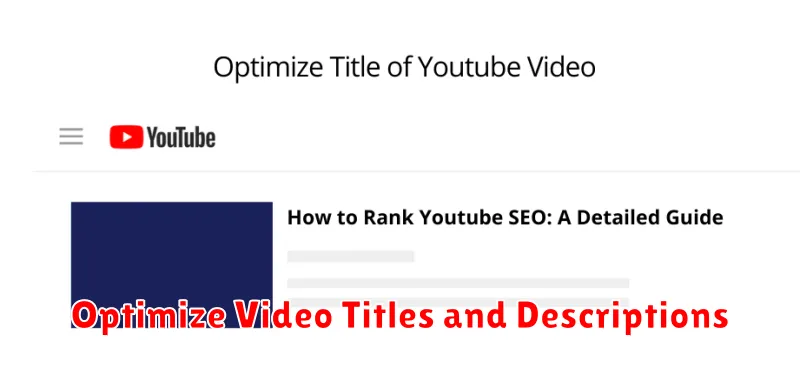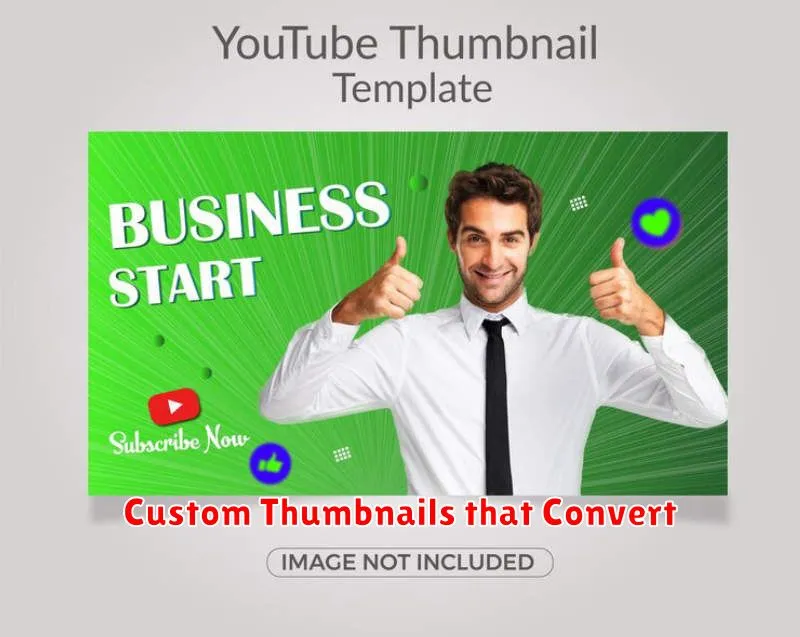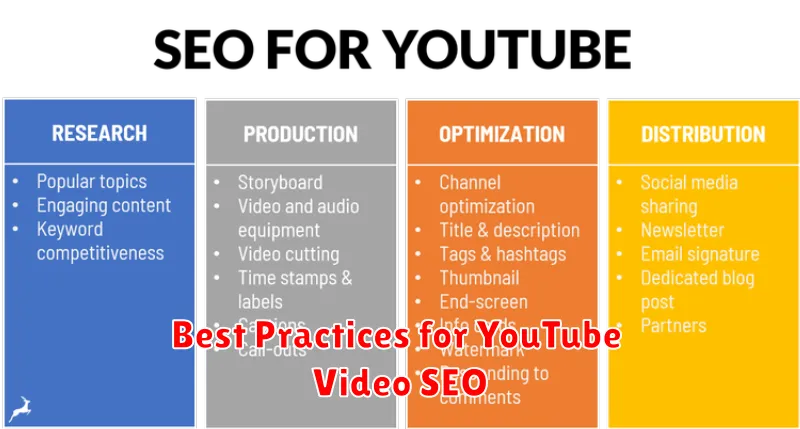Are you creating amazing YouTube videos but struggling to get them seen? YouTube video SEO is crucial for maximizing your video’s visibility and reach. By optimizing your videos for search, you can attract a larger audience, increase views, and grow your channel. This article will explore the best practices for YouTube video SEO to help you rank higher in search results and gain more exposure. Learn how to leverage keywords, optimize descriptions, and utilize other strategies to make your content more discoverable. From understanding keyword research to crafting compelling titles and descriptions, this guide will cover everything you need to know to improve your YouTube video ranking.
Implementing effective YouTube SEO strategies is essential for any content creator seeking to expand their reach and impact. This article will delve into the critical components of video optimization, including keyword research, title optimization, description optimization, and the use of tags. We’ll provide actionable best practices and insights to help you master YouTube video SEO and achieve greater success on the platform. By following these proven methods, you’ll be well-equipped to increase your video’s visibility, attract a wider audience, and ultimately, achieve your YouTube goals.
Keyword Research for YouTube
Keyword research is crucial for YouTube SEO. It helps you understand what your target audience is searching for and allows you to optimize your videos accordingly. Effective keyword research can significantly increase your video’s visibility and organic reach.
Start by brainstorming topics relevant to your channel. Then, use keyword research tools to identify specific keywords and phrases people use when searching for those topics. Consider search volume (how often a keyword is searched) and competition (how many videos are already targeting that keyword).
Look for long-tail keywords (longer, more specific phrases) as they often have less competition and can attract a highly engaged audience. For example, instead of “guitar lesson,” try “beginner acoustic guitar lesson for folk songs.”
Optimize Video Titles and Descriptions

Titles and descriptions are crucial for YouTube SEO. They inform viewers and search engines about your video’s content. A compelling title can significantly impact click-through rates.
When crafting titles, include relevant keywords that accurately reflect your video’s topic. Keep titles concise and engaging, ideally under 60 characters to avoid truncation in search results. Accurately represent the video’s content to avoid misleading viewers.
Descriptions provide more context about your video. Use relevant keywords within the first few lines and throughout the description. Provide a comprehensive summary of your video’s content, including key takeaways and calls to action. Consider adding timestamps for longer videos to improve user experience.
Use Tags and Hashtags Wisely
Tags and hashtags play crucial roles in YouTube SEO. They help YouTube understand your video’s content and categorize it appropriately, making it easier for viewers to discover.
Use a mix of broad and specific tags. Broad tags relate to the general topic, while specific tags target niche keywords. For example, a video about baking a chocolate cake might use broad tags like “baking” and “dessert” alongside more specific tags like “chocolate cake recipe” and “easy chocolate cake.”
Prioritize relevance. Tags should accurately reflect your video’s content. Avoid keyword stuffing or using misleading tags, as this can negatively impact your video’s performance.
When using hashtags, focus on a few relevant ones. Don’t overload your description with hashtags; instead, choose those that are most descriptive of your video’s topic. Consider using a mix of broader and more niche hashtags to maximize discoverability.
Custom Thumbnails that Convert

Thumbnails are arguably the most important element for attracting clicks and views on YouTube. A compelling thumbnail can significantly impact your video’s click-through rate (CTR). Don’t rely on YouTube’s auto-generated thumbnails; invest time in crafting custom ones that accurately represent your content while also being visually appealing.
Consider these best practices for creating effective thumbnails:
- High Resolution: Use high-quality images that are clear and sharp, even on larger screens.
- Accurate Representation: Ensure your thumbnail reflects the content of your video. Misleading thumbnails can lead to viewer dissatisfaction and lower watch time.
- Visually Appealing: Use bright colors, bold text, and engaging visuals to grab attention.
- Branding Consistency: Maintain a consistent style across all your thumbnails to reinforce your brand identity.
- A/B Testing: Experiment with different thumbnail designs to see which perform best in terms of CTR.
Add Captions and Transcripts
Captions and transcripts are crucial for YouTube SEO. They make your videos accessible to a wider audience, including viewers who are deaf or hard of hearing, and those who prefer to watch with the sound off.
Search engines can’t “watch” videos, but they can crawl text. Captions and transcripts provide searchable text that helps YouTube understand your video’s content. This improves your video’s discoverability in search results.
While YouTube offers automatic captions, they are frequently inaccurate. Accurate captions and transcripts are essential for a positive viewer experience and optimal SEO performance. Consider creating your own or editing the automatically generated ones for accuracy.
Benefits of Captions and Transcripts
- Improved Accessibility
- Enhanced SEO
- Better User Experience
- Wider Reach
Boost Watch Time and Engagement
Watch time and audience engagement are crucial ranking factors on YouTube. Higher watch time signals to YouTube that viewers find your content valuable, leading to improved visibility in search results and recommendations.
Several strategies can effectively boost these metrics:
Create High-Quality Content
Start with a strong hook to grab viewers’ attention immediately. Maintain a consistent upload schedule to keep your audience engaged and coming back for more. Ensure your videos are well-edited, visually appealing, and offer genuine value to the viewer.
Promote Interaction
Encourage viewers to like, comment, subscribe, and share your videos. Ask questions in your videos to spark discussion. Respond to comments to foster a sense of community.
Optimize for Search
Use relevant keywords in your video titles, descriptions, and tags. Create compelling thumbnails that accurately reflect the content of your video.
Track Video Performance Metrics
Monitoring your video’s performance is crucial for ongoing optimization. YouTube Analytics provides a wealth of data to help you understand what’s working and what’s not.
Key metrics to track include:
- Watch time: This indicates how long viewers are engaged with your content. A higher watch time suggests your video is resonating with your audience.
- Average view duration: Similar to watch time, this metric helps you understand how much of your video viewers are watching on average.
- Click-through rate (CTR): This measures how often viewers click on your video thumbnail after seeing it in search results or recommendations. A high CTR indicates a compelling thumbnail and title.
- Audience retention: This metric visualizes viewer engagement throughout your video, highlighting drop-off points.
- Impressions and reach: Track how many times your video thumbnail is displayed and the number of unique viewers it reaches.
By analyzing these metrics, you can identify areas for improvement in your content creation and SEO strategy. For example, if your audience retention drops significantly at a certain point, it might indicate a problem with that section of the video.

